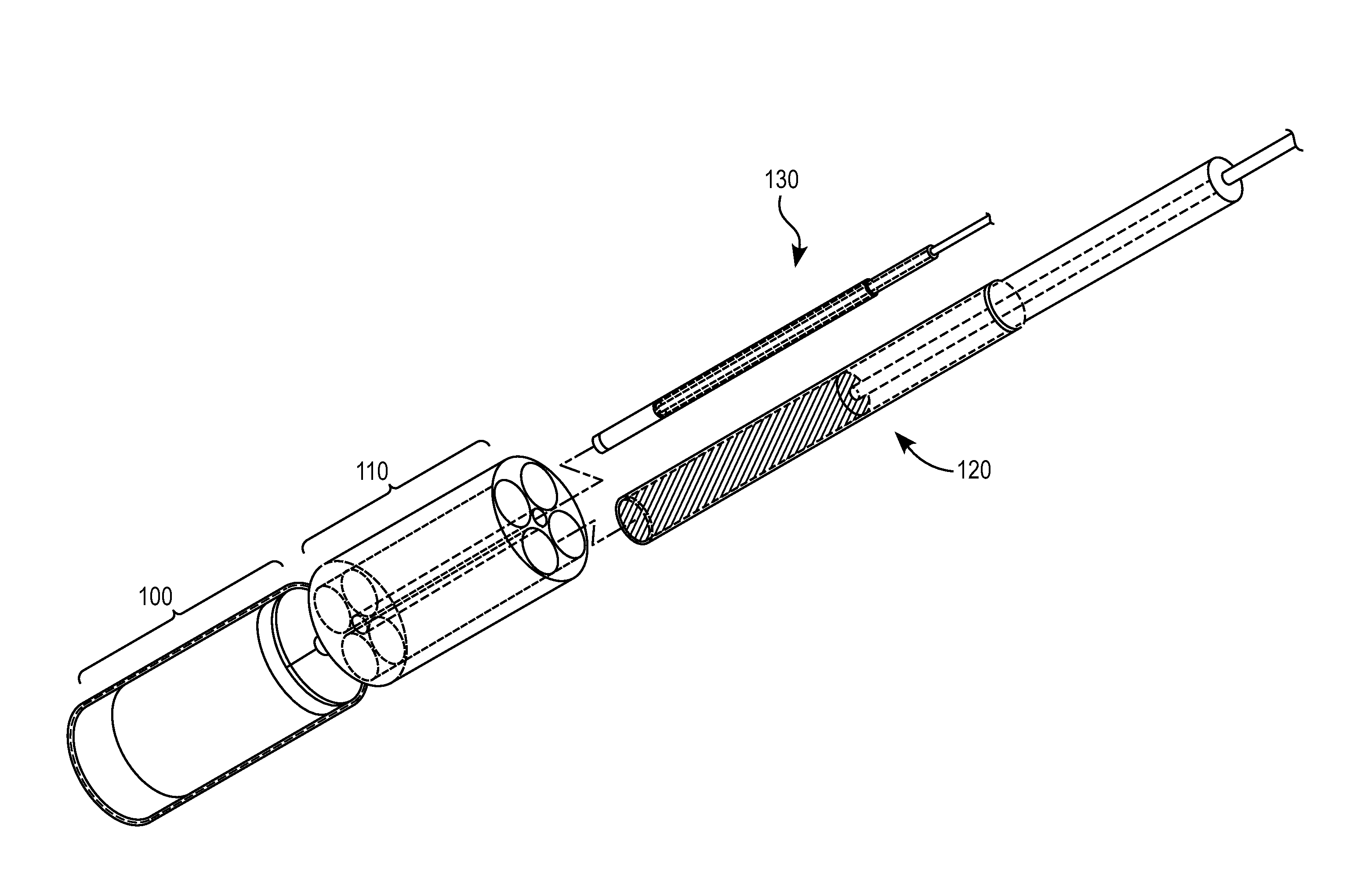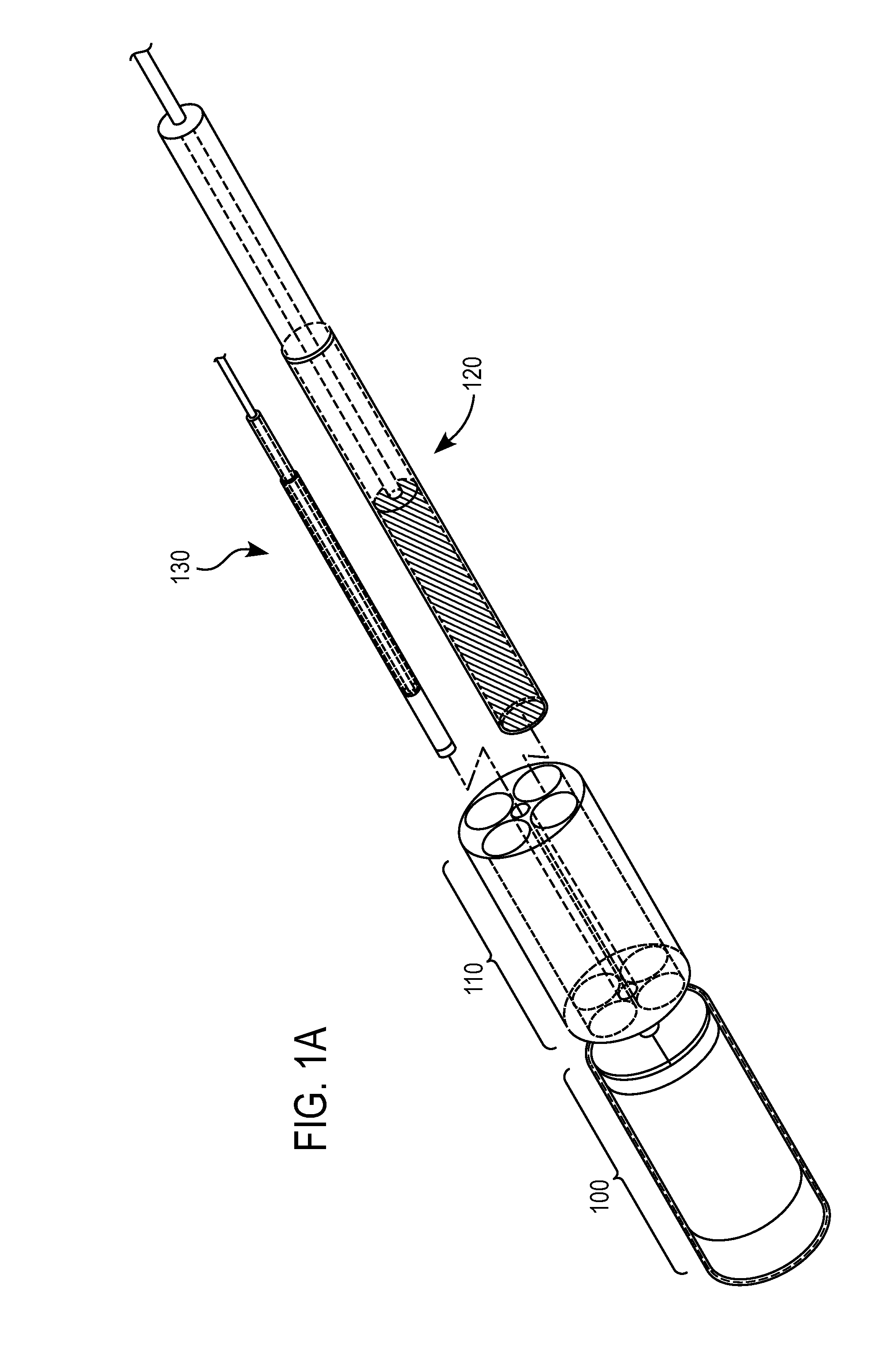Fiber optic probes utilizing grin lenses for spatially precise optical spectroscopy
a fiber optic and optical spectroscopy technology, applied in the field of fiber optic spectroscopy probes, can solve the problems of high cost, high cost, and high technical complexity of low light levels, and achieve the effects of less difficulty in resolving individual peak levels, high cost, and high cos
- Summary
- Abstract
- Description
- Claims
- Application Information
AI Technical Summary
Benefits of technology
Problems solved by technology
Method used
Image
Examples
Embodiment Construction
[0042]The present invention provides miniature fiber optic probes that utilize gradient index (GRIN) lenses to focus the light delivery spot to a focal volume or point and cause collection of light to be obtained from the same or approximately the same focal volume point, whilst maximizing the amount of light collected from the sample. More generally, any desired focal point / volume can be selected for each of the light delivery and light collection paths.
[0043]To manipulate the spot size(s) of the light delivery and the collection, an understanding of the GRIN lens performance is required. There are two important aspects of GRIN lenses that must be understood to understand this invention's design. The first aspect is the effective useful diameter of the GRIN lens when coupled to a 0.22 NA fiber. A 1.8 mm diameter GRIN lens (GoFoton, Japan, previously Nippon Sheet glass (NSG), SELFOC micro lens™) which is 0.46 NA and 0.25 pitch when you put a 0.22 NA 100 micron core fiber to this len...
PUM
 Login to View More
Login to View More Abstract
Description
Claims
Application Information
 Login to View More
Login to View More - R&D
- Intellectual Property
- Life Sciences
- Materials
- Tech Scout
- Unparalleled Data Quality
- Higher Quality Content
- 60% Fewer Hallucinations
Browse by: Latest US Patents, China's latest patents, Technical Efficacy Thesaurus, Application Domain, Technology Topic, Popular Technical Reports.
© 2025 PatSnap. All rights reserved.Legal|Privacy policy|Modern Slavery Act Transparency Statement|Sitemap|About US| Contact US: help@patsnap.com



